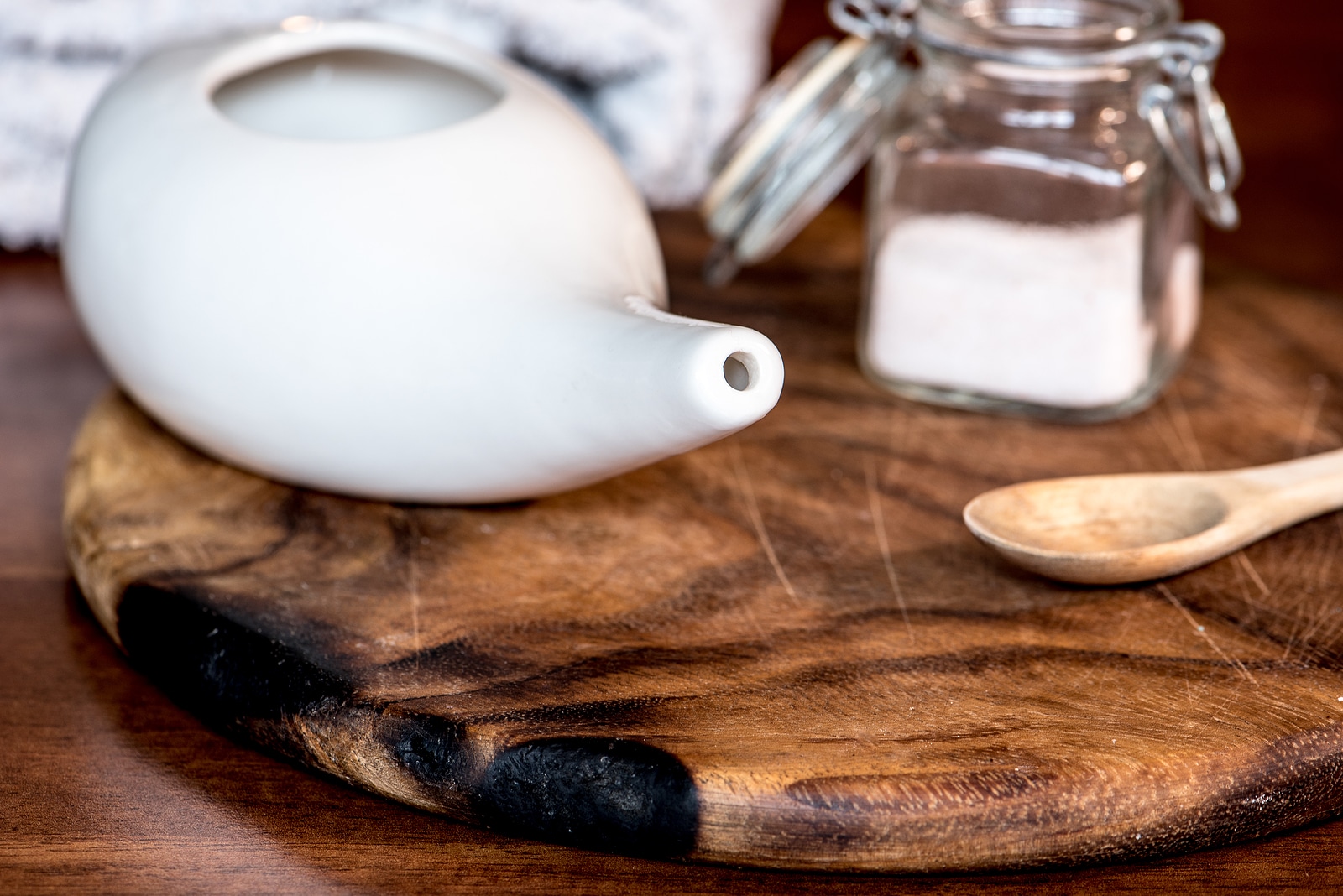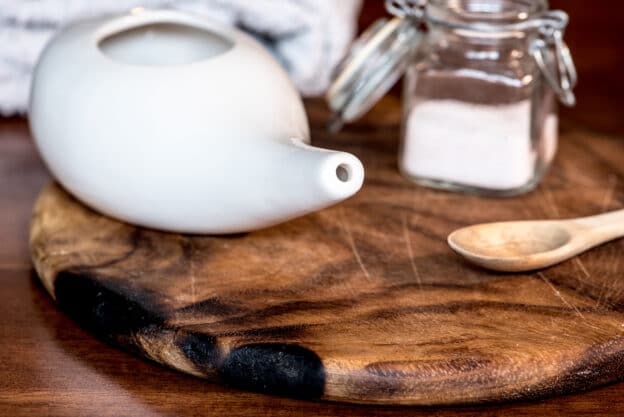People have been rinsing their nasal passages for their health and well being for a long time. From neti pots described in ancient texts up until high-tech nebulizer devices today – many people have benefited from using a device to clear their nose and sinuses.
Jala Neti and Neti Pots
The practice of nasal rinsing is likely thousands of years old and appears in texts of hatha yoga that describe body cleansing techniques. The technique of “jala neti” refers to cleansing of the nasal passages with an irrigation typically using a neti pot. This is just one method outlined in yogic texts – others include using water through the mouth and expelling it through the nose or using a wet string. The neti pot is the nasal rinsing device that has been around the longest.
Nasal rinsing according to yogic practice actually was around long before there is evidence of the use of a neti pot. Neti pots are now widely available as nasal irrigation devices and became more popular with the spread of yoga practices in Western countries.
Nasal Irrigation Bottles
Plastic nasal irrigation bottles work similarly to a neti pot in that they provide a high volume of solution into one nasal passage which is then discharged through the other nasal passage. These bottles usually allow the saline solution to be mixed in the bottle and may even have markings that allow for more accurate measurement of the nasal irrigation volume. The nasal irrigation bottle is held up to the nose as the head is tilted over a sink and the water bottle is squeezed to propel the rinse.
Nasal Nebulizer
A nasal nebulizer is a device that propels a saline rinse into the nasal passages. These devices use some type of motor to propel medication into a fine mist that helps cleanse the nasal passages with a lower volume of solution. The particles that are dispersed are effective for cleansing the nasal passages but are too large to reach the lungs. This separates these devices from traditional nebulizers that are intended to treat respiratory conditions.
Nasal nebulizers may need to be plugged in to work or can be battery powered. Because they may use a lower volume of solution, nasal nebulizers may produce less of a mess and not need to necessarily be used over a sink like a neti pot.
Benefits of Nasal Rinsing
Studies have shown that nasal rinsing can improve health and reduce the necessity of nasal medications in some cases. For example patients who are using nasal steroids may be able to reduce their use with the addition of nasal rinsing to their treatment regimen.
The exact mechanism of nasal rinsing and the reason for its benefits is sometimes debated. Most experts believe it is a mechanical intervention – that is that it physically removes debris and allergens from the nasal passages. This makes it an effective treatment for many upper respiratory conditions.
Patients generally report that nasal rinsing is effective for treating chronic sinusitis symptoms. Doctors frequently recommend nasal rinsing for conditions like chronic rhinosinusitis, acute bacterial rhinosinusitis, seasonal allergic rhinitis, viral upper respiratory infections, and allergic rhinitis. Healthcare providers may recommend nasal rinsing as a first line treatment in some cases and in others as an adjunct treatment along with nasal or systemic medications. Nasal rinsing is not just for people suffering from a chronic condition however – many people report that it helps them breathe easier and have reduced incidences of congestion.
Composition of Saline Nasal Rinses and Tips for Use
The effectiveness is thought to be independent of the exact composition of the solution. However the most common solution used is a 0.9% saline solution to reduce irritation. This is referred to as an isotonic saline solution. If the percentage of salt is between 1.5 to 3% it is referred to as a hypertonic solution.
In general the risks of nasal rinsing are extremely low. The one risk of bacterial contamination is rare and some experts do not consider it to be an actual problem. Only distilled water should be used or water that has been boiled for at least 5 minutes to prevent the risk of infection with bacteria that may be found in tap water. The CDC has some general tips for preparing a saline rinse for nasal use. https://www.cdc.gov/parasites/naegleria/sinus-rinsing.html
Water that is very cold or very hot will likely be uncomfortable and should be avoided. Water that is warm (around body temperature) and that has the saline concentration similar to the nose (0.9%) is likely to be the most comfortable. Rinses are used 1-3 times per day by patients who are treating a chronic condition however most individuals can use them as-needed.


